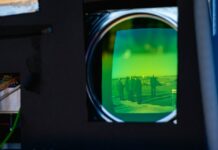Traditional air defence systems, designed for larger and more expensive threats, struggle to provide a cost-effective countermeasure to widely used micro- and mini-unmanned aerial vehicle (UAVs). The need for affordable countermeasures is urgent, especially as adversaries both state and non-state are increasingly deploying UAVs in coordinated attacks. This article explores the role of low-cost kinetic effectors in countering UAV threats, examining their effectiveness, operational costs, and differing design concepts.
Low cost in the context of UAV defence
For any kinetic counter- unmanned aerial vehicle (C-UAV) system, the initial procurement and long-term operational costs must be carefully weighed. Acquisition costs involve the purchase of weapon systems, initial munition stocks, auxiliary equipment, and support services – often constituting the largest single-time expense during a system’s lifecycle. However, operational costs such as future munition purchases, maintenance, spare parts supply, operator training, and logistics are some of the main factors that determine the system’s long-term affordability.
According to estimates from the Center for Strategic and International Studies (CSIS), a single PATRIOT battery with five launchers and a typical loadout of munitions (plus two missile reloads) costs USD 400 million for the system and USD 690 million for the missiles. This highlights a critical issue for high-end surface-to-air missile (SAM) systems, whereby the cost for munitions can run higher than the system itself when magazine depth is factored in. Add operator training, spares and maintenance, and money set aside for overcoming future obsolescence, and the cost is even greater.

The idea of seeking a cost parity between threat and counter-measure is apparent when the price of adversary threats such as the Shahed-131/136 (and Geran’-1/2 Russian domestic versions) one-way attack (OWA) UAVs in use with Russia have been estimated to cost between USD 20,000 and USD 50,000. Shaheds have become infamous through their usage in the ongoing war in Ukraine, most notably in late-2022. While Ukraine actively organised its air defences to counter a sustained effort against its energy grid from threats including Shaheds, the strategic cost of successful strikes was nonetheless immense, with up to 40% of Ukraine’s energy infrastructure being damaged in late-2022 and early-2023. With energy shortages leading to negative economic, social, and political consequences, the lack of effective defensive coverage can cost dearly.
It is critical for procurement officers to strike the right balance for C-UAV defence systems, finding a balance between capabilities and sustainment costs. Such costs go beyond money, with the massive usage of UAVs in conflicts such as Ukraine, C-UAV munitions stockpiles would need to number in the thousands. It is clear that with typical air defence munitions, such stockpiles are beyond the reach of most budgets, which only makes the development of C-UAV systems and munitions all the more important. This article will attempt to briefly examine two C-UAV clusters of effectors: UAV-based interceptors and C-UAV SAMs.
UAV-based interceptors
UAV-based interceptors, encompassing fixed-wing and multi-copter designs, vary widely in capability and are typically pitched as cost-effective alternatives to SAM systems. These subsonic platforms, powered by electric motor-driven propellers, are often recoverable if unused post-launch. Their lethality differs by design – some use high-explosive fragmentation (HE-FRAG) warheads, others simply ram their targets, while softer effector options such as net launchers can also be used to effectively disable threats.
A prevalent design is the cruciform quadcopter with an elongated body, which employs speed and mass to strike and disable target UAVs. Unlike hovering-optimised quadcopters (such as the DJI Mavic series), these interceptors focus on acceleration and impact force, delivering sufficient kinetic energy to defeat their target through simple collision.
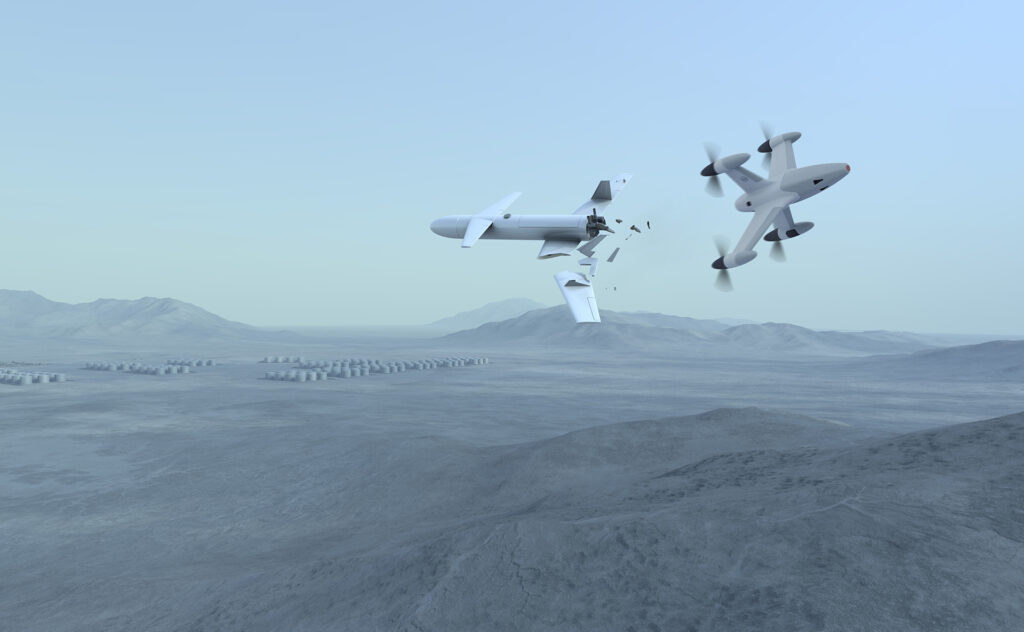
Similarly, Russia’s ‘Molot’ (Hammer), a man-portable interceptor weighing 1.5-2 kg with a 1 km range, also employs kinetic impact, launching from a handheld canister, and using an infrared (IR) homing seeker to engage acquired targets in a ‘fire and forget’ manner. In contrast, Ukraine’s ‘Sting’ UAV, a larger cruciform design targeting Class III UAVs such as Shahed drones, features an explosive warhead, reaches speeds of 160 km/h, and operates up to 3 km altitude, though its remote-controlled nature limits scalability for mass deployment.
Purpose-built UAV interceptors deliver superior performance and reliability, but generic quadcopter-based systems offer a cheaper alternative. In this vein, MBDA, partnering with Fortem Technologies, have developed a warhead and sensor combination which can be mounted on various user-defined quadcopters, and integrating them with the Sky Warden C-UAV system. The warhead and sensor package features a Doppler-radar and HE-FRAG warhead, with the radar triggering the warhead at an optimal distance from the target. Ukraine has shown commercial UAVs can be repurposed for interception, fitting drones with impact-fused warheads to target enemy helicopters, effectively acting as a ‘poor man’s short-range air defence (SHORAD) system’.
Anduril Industries, a US newcomer, provides the Roadrunner-M as their entrant into this segment. This is an autonomous, twin-turbojet-powered UAV with vertical take-off and return capability, which is stored in self-contained launch containers and launched vertically. Its turbojets represent a somewhat unconventional choice among UAV interceptors, given that they provide less speed than rocket motors, while being faster but more expensive than electrically-powered propellers.
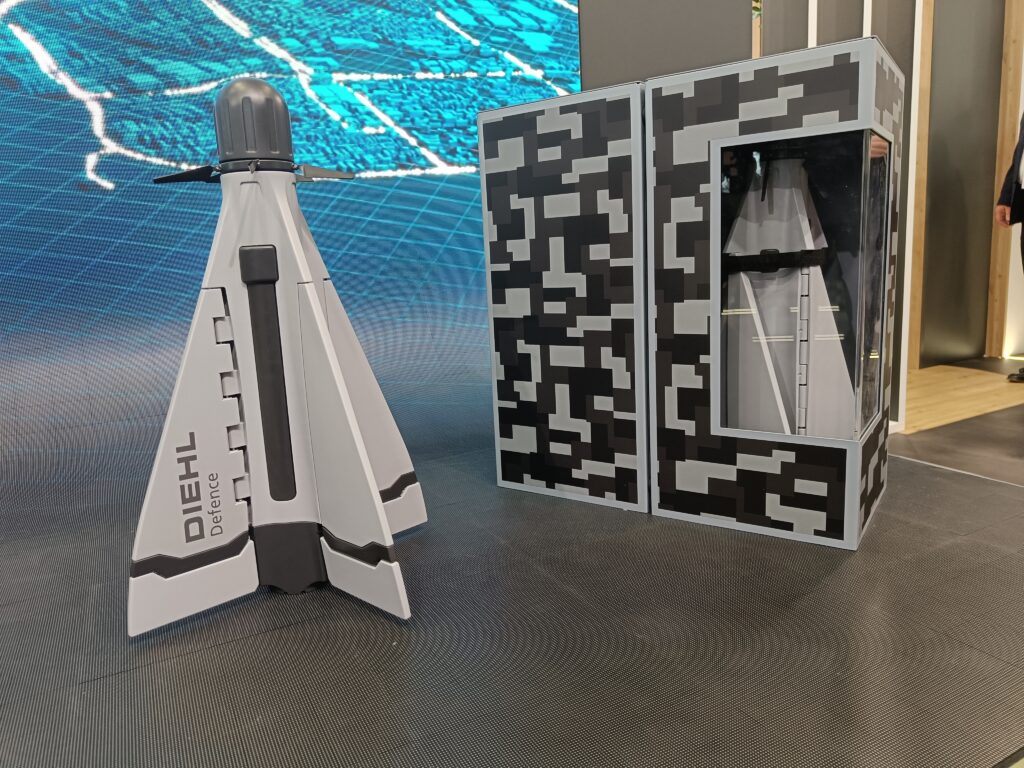
The interceptor has reportedly been developed in partnership with Skysec, a company that manufactures the visually similar Sentinel Catch, a net-based interceptor. The Sentinel Catch has a range of 5 km, a top speed of 65 m/s, and weighs 1.8 kg, with a wingspan of 300 mm and a length of 700 mm. Diehl’s involvement appears to have taken the base Sentinel Catch design, and further developed it, with the addition of a high-explosive fragmentation (HE-FRAG) warhead. According to Diehl, the Cicaca can be integrated with the Guardion modular C-UAV system, or used as a standalone system. The company has stated that Cicada is slated to be ready for production in 2026.
UAV-based interceptors can offer several advantages, including lower unit costs, faster production cycles, and the use of commercially available components. The trade-off in cost between autonomous, purpose-built UAV interceptors and remotely-operated quadcopters somewhat mirrors the affordability and accessibility of the various threats they are designed to counter.
C-UAV SAMs and hybrid designs
SAMs excel in range, speed, manoeuvrability, warhead mass, and autonomy, functioning as one-way aerial vehicles that navigate – either autonomously or guided by fire-control radar –from launch to intercept. Costing more per shot than UAV-based interceptors due to complex components, they’re less economical for targets within 10 km, where simpler, cheaper options such as cannons or man-portable systems may. Though capable of countering UAVs, their high cost drives the use of alternatives or the development of affordable SAMs, spurred by the UAV threat.
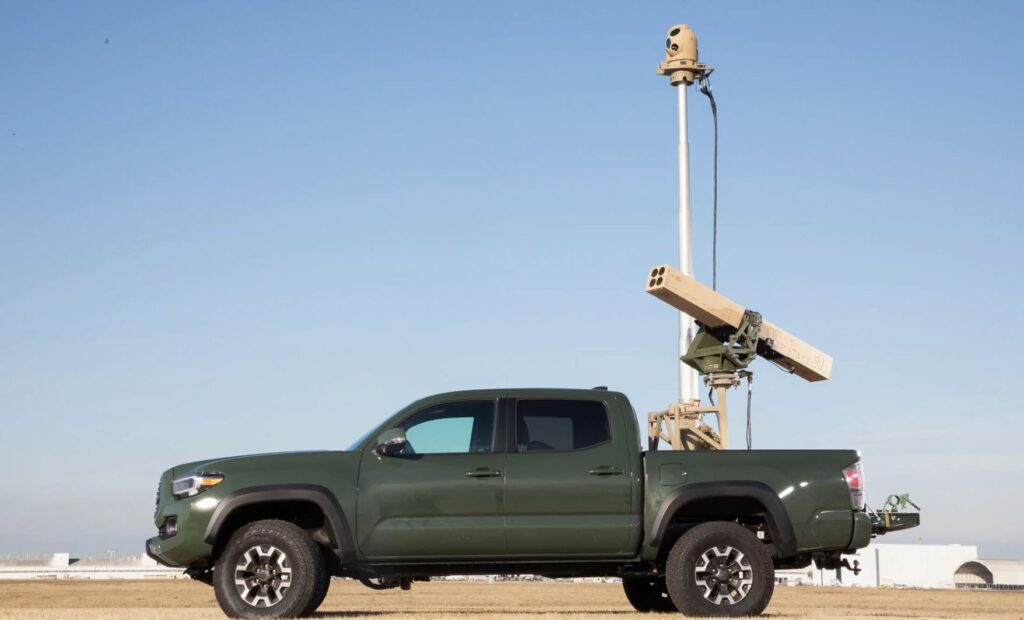
The APKWS II uses an unusual design in the form of a distributed aperture semi-active laser seeker (DASALS). Rather than relying on a single centreline-mounted seeker in the nose of the missile, instead four miniature SAL seekers are mounted in the rocket wings. The wings themselves are also provided with flaps to allow steering. This arrangement allows the use of stock Hydra warheads, with the APKWS guidance section simply slotting in between warhead and rocket motor. With the application of an optional proximity fuse, the end product resembles a small short-range SAM.
L3Harris Technologies has adapted the APKWS kit as the effector for its Vampire C-UAV system. Vampire can use a pod with up to four missiles and is linked to a Wescam MX-RSTA optoelectronic sight, providing day and thermal channels, along with a laser target designator. The system has already seen combat use in Ukraine, reported to have successfully intercepted a Shahed 136. While BAE Systems states a maximum range of 5 km when launched from a rotary-ring platform, with ground-launched range likely substantially lower, and with the idea being to utilise the existing Hydra rocket design, extending this range is unlikely if it is to remain a generic design rather than bespoke.
Another interesting low-cost utilisation of unguided rockets is the RP-24 multiple launch rocket system from Hades Defense Systems. The is based on a 57 mm S-5 rocket coupled to a programmable timed-fuse. The launcher can be cued by an in-house HAWK radar which the company states can detect aerial objects with a radar cross section (RCS) of 0.01 m2 at a range of 6 km. The fuse is then programmed to explode at the optimal time to intercept the target, with the rocket itself being unguided, so it relies entirely on the launcher pointing at a precise bearing. This method, while offering an extremely cheap effector, would have a challenge intercepting a manoeuvring aerial threat.
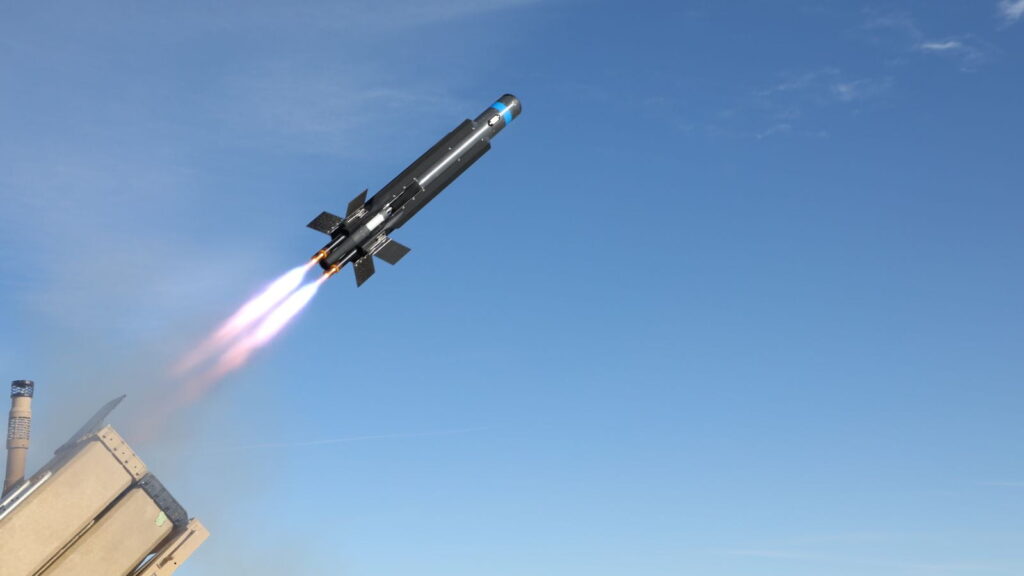
Emphasis on constructing missiles from more generic parts that can be procured or constructed with materials from the civilian market is another emerging trend that seeks to minimise cost, development, and production time for such weapons. Although at an early stage, Estonian firm Frankenburg Technologies is developing the ‘Frankenburg Missile Mark 1’, which it aims to test in Ukraine sometime in 2025. The missile effector is being designed to engage UAVs flying at a range of up to two kilometres, and at altitudes of a kilometre. Development on the missile has been rapid, with a mock-up pod being showcased on Milrem’s Havoc unmanned ground vehicle (UGV) at the IDEX 2025 exhibition in the UAE.
Honourable mentions: remote weapon stations & shotguns
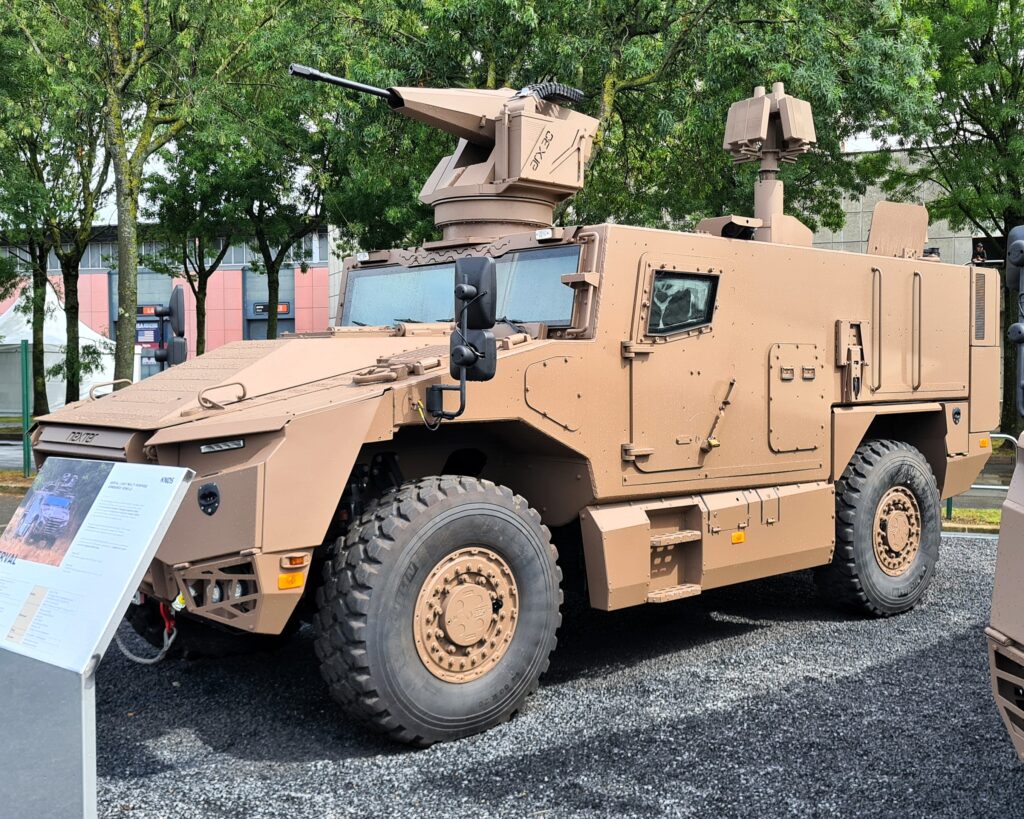
Conceptual designs have also emerged, claimed to be more cost-effective than 30 mm programmable air-burst munitions. During a visit to the Russian Centre for Unmanned Systems and Technologies by Dmitry Medvedev, a system called ‘Titan’ was unveiled. It features a 24-barrel shotgun pedestal that can rotate and elevate its barrels, appearing to offer a close-in defence solution for point defence, with what appeared to be a day camera for target tracking. Given the barrel size, the range is likely very limited, but if claims of the Titan’s ability to fire salvos are realised, it could provide a last-ditch defence, particularly for vehicle-based C-UAV applications.
Parting thoughts
As UAV technology continues to evolve, so must the capabilities to counter them. The effectiveness of any kinetic C-UAV system is ultimately measured not only by its ability to neutralise threats but also by its cost-efficiency and scalability. While traditional air defence systems remain valuable, the high cost of missile-based interceptors makes them unsustainable for countering vast numbers of inexpensive UAVs. Emerging solutions, such as repurposed guided rockets or UAV interceptors, offer alternatives that balance cost and capability. The development of low-cost kinetic effectors will play a crucial role in ensuring that defensive capabilities keep pace with the rapidly expanding UAV landscape.
Chris Mulvihill












